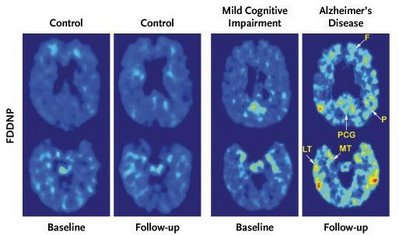There have been some recent reports about the increasing use of atypical antipsychotics on both ends of the age spectrum. The US GAO (Government Accountability Office) issued a report in December finding higher rates of psychotropic use, including antipsychotics, in foster children compared to nonfoster children (3-4 times higher). Recommendations for increased vigilance and monitoring were made.
In May 2011, the US OIG (Office of the Inspector General) issued a report entitled, "Medicare Atypical Antipsychotic Drug Claims for Elderly Nursing Home Residents." This report examined claims from a six-month period in 2007, finding that 14% of nursing home residents had at least one claim for an antipsychotic, amounting to over $300 billion. Eighty-three percent of these claims were for off-label conditions (e.g., agitation, insomnia), and 88% were associated with a dementia diagnosis. Atypical antipsychotics carry a warning about using them in elderly patients with dementia due to an increased risk of heart attack and stroke.
So, there was a hearing in November before the Senate Special Committee on Aging about this issue. The hearing itself can be viewed on their website, as well as links to the testimony provided.
This is an important issue, because as our population ages and develops more dementia, the pressure to manage the resulting behavioral problems with pills rather than with patience, understanding, and adaptation. Medications can have a role, but cannot be the only solution and should not be used excessively. Some quotes follow.
I believe that behavior itself is not a disease. Simply put, behavior is communication. In people whose ability to communicate with words is limited (such as patients with dementia), communication tends to be more nonverbal (i.e. behavioral). Our challenge is to figure out what they are trying to say, and if they are in distress, to identify the underlying causes and precipitants. Many of the behaviors that are commonly observed in patients with dementia and that are often labeled as difficult, challenging, or bad, such as agitation, wandering, yelling, inappropriate urination, and hitting are typically reactive, almost reflexive behaviors that occur in response to a perceived threat or other misunderstanding among patients who by the definition of their underlying illness have an impaired ability to understand. ...
Patients with dementia often have trouble comprehending their environment, resulting in misperceptions that are often perceived as threats. In most instances, the key to behavior management in dementia is environmental modification, especially the human environment, which may be as simple as changing our approach and our response in order to prevent and minimize distress. The fundamental basis of health care is caring for others. The fundamental basis of caring is love, acceptance, and respect for persons.~Jonathan M. Evans, MD, MPH, FACP, CMD
Vice President, AMDA−Dedicated to Long Term Care Medicine
Medications are used often as the first intervention because family members, care givers, nurses and doctors in ALL settings lack information or training regarding alternatives. To merely target this one class of drug as the “problem to be fixed” will have the unintended consequence of increasing the use of other, equally risky medications, such as benzodiazepines, anti‐seizure medications and sedative‐hypnotics, all of which have side effects that include confusion, falls, and risk of death. Furthermore, if the focus is only on the nursing home, we will create barriers to access for care that patients and families desperately need. In some states, such as California where consent rules regarding the use of any psychoactive medications in nursing homes are in place, some nursing homes have declined admissions because of a “history of behavior problems requiring psych meds”, creating real challenges for caregivers and often requiring patients to stay for long periods in the acute care hospital. The solution to this challenge is not a short‐term fix, but rather a two‐fold strategy that involves systemic application of non‐pharmacological behavioral interventions as the first line of treatment, with close monitoring for appropriate and limited use of medications when the non‐pharmacological approaches have not worked.~Cheryl Phillips, M.D., AGSF
Senior VP Advocacy, LeadingAge
Despite the severity and frequency of these symptoms, there is currently no FDA approved therapy used to treat BPSD [behavioral and psychotic symptoms of dementia]. As a result, many types of medications, including atypical antipsychotics, have been used “off-label” in an attempt to mitigate these symptoms. In 2005, the FDA examined this issue and found that the use of atypical antipsychotics in people with dementia over 12 weeks helped to reduce aggression, but was also associated with increased mortality. ...
The Association recommends training and education on psychosocial interventions for all professional caregivers. Specifically, the Alzheimer’s Association believes “in making the decision to utilize antipsychotic therapy the following should be considered:~Tom Hlavacek
Identify and remove triggers for behavioral and psychotic symptoms of dementia: pain,
under/over stimulation, disruption of routine, infection, change in caregiver, etc;
Initiate non-pharmacologic alternatives as first-line therapy for control of behaviors;
Assess severity and consequences of BPSD. Less-severe behaviors with limited
consequences of harm to individual or caregiver are appropriate for non-pharmacologic
therapy, not antipsychotic therapy. However, more severe or “high risk” behaviors such
as frightening hallucinations, delusions or hitting may require addition of antipsychotic
trial;
Determine overall risk to self or others of BPSD, and discuss with doctor the risks and
benefits with and without antipsychotics. Some behaviors may be so frequent and
escalating that they result in harm to the person with dementia and caregiver that will in
essence limit the life-expectancy and or quality of life of the person with Alzheimer’s
disease; and
Accept that this is a short-term intervention that must be regularly re-evaluated with your
health care professional for appropriate time of cessation.”
Executive Director, Alzheimer’s Association of Southeast Wisconsin





